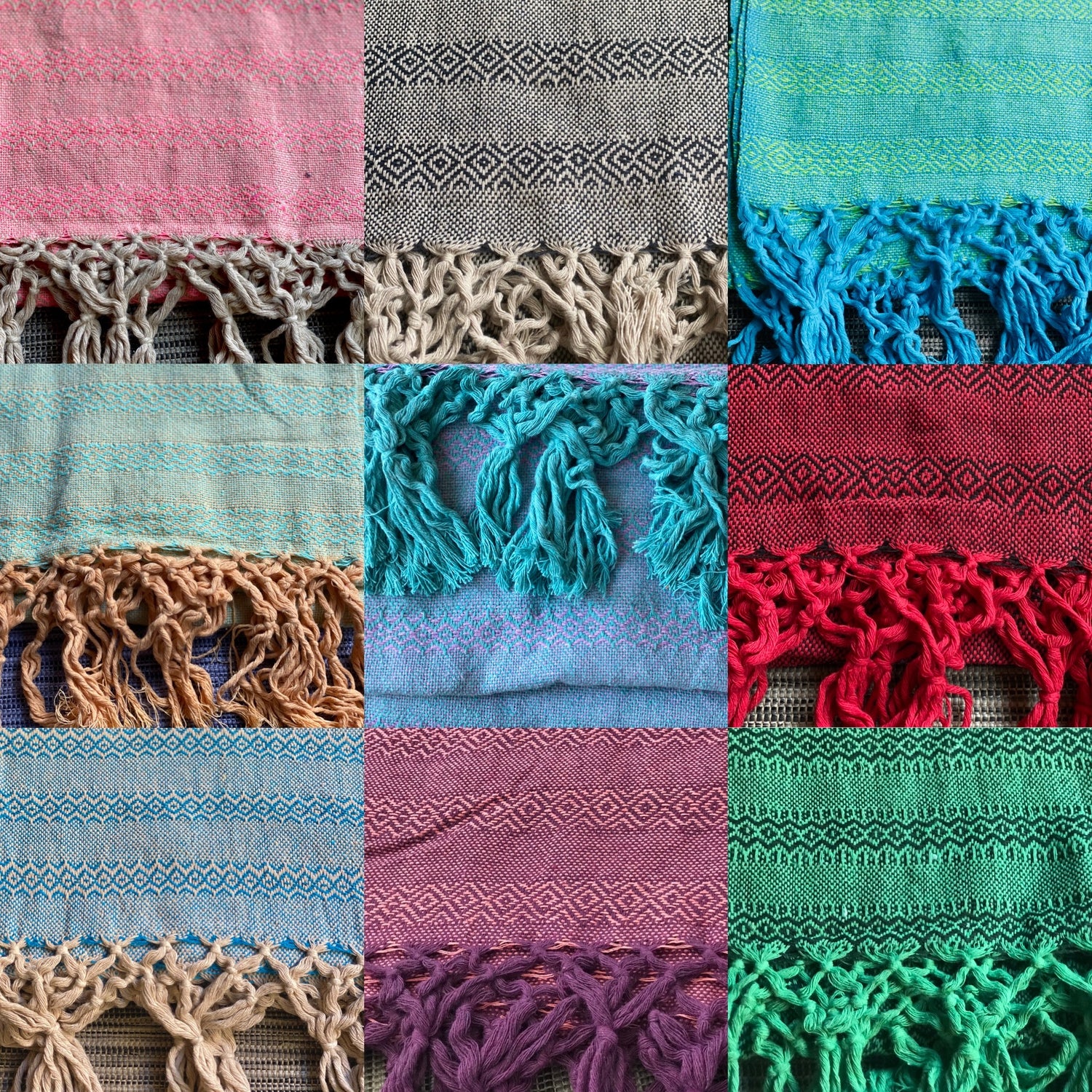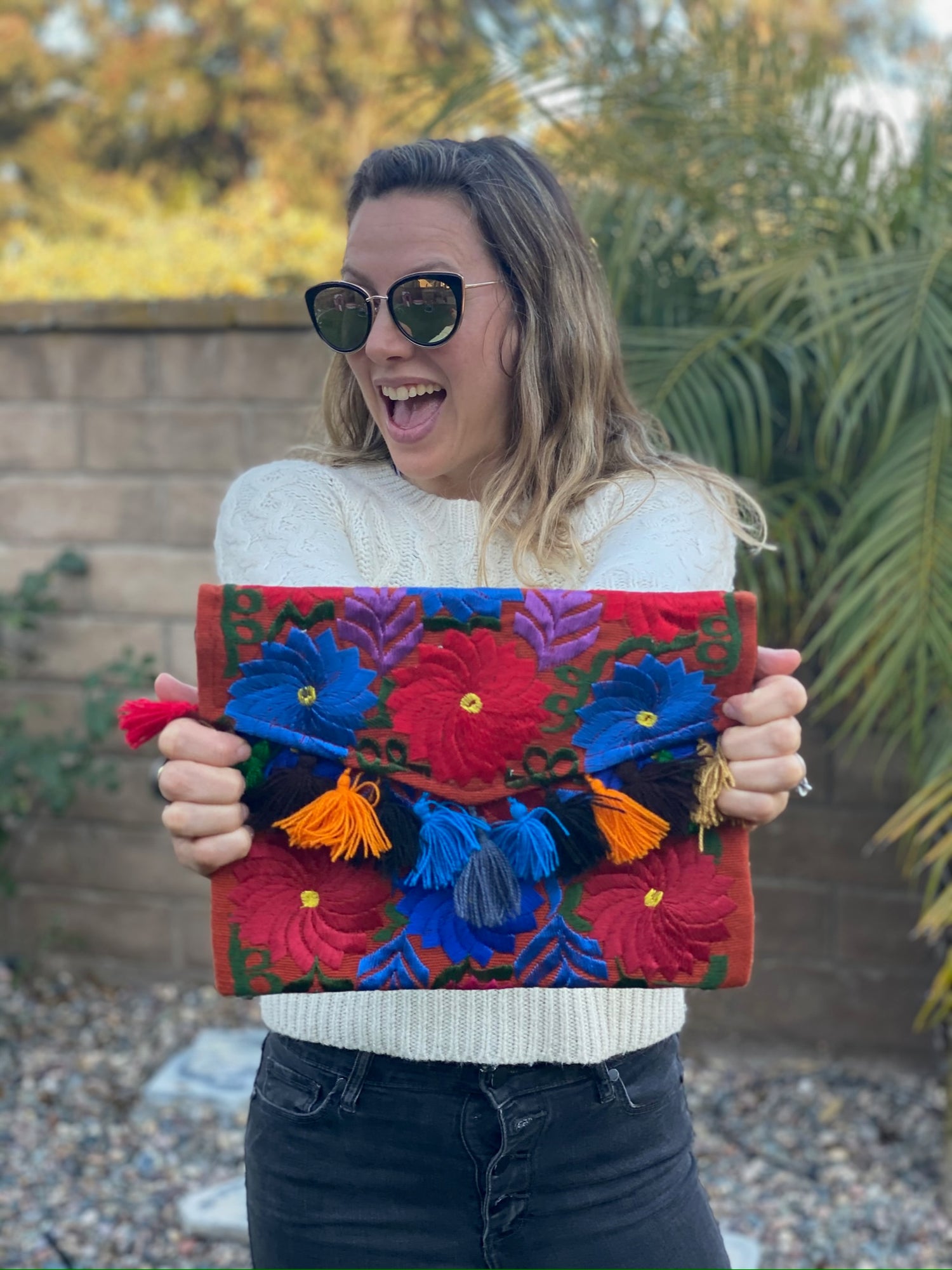The Day of the Dead is a vibrant celebration that honors deceased loved ones, blending ancient Mexican traditions with modern practices. The rebozo, a traditional Mexican shawl, plays a significant role in this holiday, symbolizing connection and protection between the living and the dead.
Understanding how the rebozo enhances the Día de los Muertos experience provides a deeper appreciation for this rich cultural heritage.

In Mexico, the use of the rebozo during these festivities embodies both history and artistry. It is not merely a garment; it serves as a powerful symbol linking generations.
Embracing this rich tradition adds depth to your celebration and highlights the importance of remembering and honoring those who have passed.
As you delve into the various elements of the Day of the Dead, you'll discover how the rebozo represents love, respect, and continuity. This awareness enriches your understanding of the cultural significance and emotional impact of this cherished Mexican holiday.
Key Takeaways
- The rebozo symbolizes connection between the living and deceased during Día de los Muertos.
- This tradition highlights Mexico's vibrant cultural heritage recognized by UNESCO.
- Understanding these elements enhances your appreciation of the holiday's significance.
Historical and Cultural Significance

The rebozo plays a vital role in the cultural fabric of Mexico, especially during traditions like the Day of the Dead. It serves as a link between the past and present, emphasizing both life and death in rituals.
Origins and Evolution
The rebozo has roots that trace back to the Aztecs and Maya civilizations. Originally used for practical purposes, it evolved into a multi-functional garment that women wore daily.
As Mexico's cultural landscape changed, the rebozo adapted, blending indigenous practices with colonial influences, particularly from Catholicism. The Spanish introduced new textiles and weaving techniques.
Today, the rebozo represents both everyday life and significant cultural rituals, such as during the Day of the Dead.
Symbolism and Meaning
The rebozo is more than just a shawl; it symbolizes the connection between life and death. During the Day of the Dead, it reflects the impermanence of life and serves as a backdrop for remembrance ceremonies.
You may notice it paired with calaveras and Catrinas, linking to the Cycle of Life and Death. The rebozo can also carry calaveras de azúcar, sugar skulls, which express the joy in remembering loved ones.
Its intricate designs often carry stories about ancestral heritage, making it a canvas for personal and community history.
UNESCO Recognition
In 2016, the Mexican rebozo was recognized by UNESCO as part of the Intangible Cultural Heritage of Humanity. This acknowledgment highlights its importance in preserving cultural heritage and customs.
The rebozo is celebrated for its craftsmanship, reflecting Mexico’s deep-rooted traditions. UNESCO's recognition emphasizes the need for preservation of such practices, ensuring future generations can appreciate this rich history, especially during significant events like November 2, when families honor their ancestors.
Celebration Elements and Practices

Día de Muertos incorporates vibrant rituals and traditions that honor loved ones who have passed. Key elements include altars adorned with offerings, rich iconography, and lively festivities that reflect Mexican culture.
Altars and Offerings
Altars, or ofrendas, are central to the celebration. You create them to honor the deceased and invite their spirits back to enjoy the offerings. Essential elements include:
- Marigolds (Cempasúchil): These bright flowers guide spirits to the altar.
- Candles: Candles symbolize light, helping the spirits find their way.
- Photographs: You place images of the departed on the altar to remember them.
- Favorite Foods: Items like pan de muerto (a traditional sweet bread) and other favorite dishes nourish the spirits.
Each item on the ofrenda has meaning, creating a personal connection with those you have lost.
Iconography and Crafts
Día de Muertos features rich iconography and crafts that reflect the celebration's themes. Catrina figures, often clad in elegant attire, serve as a reminder of death's inevitability.
Papel Picado, colorful tissue paper with intricate designs, is hung around altars and in celebrations. It represents the fragility of life. Sugar skulls, known as calaveras, are decorated with icing and serve as playful reminders of mortality.
You might also find crafts like hand-painted ceramics, which showcase local artistry and the spirit of remembrance. Each piece adds to the festive atmosphere while honoring tradition.
Festivities and Cultural Expressions
Festivities during Día de Muertos burst with energy. In cities like Mexico City and Pátzcuaro, parades and public gatherings become vibrant displays of culture.
Music fills the air, with traditional mariachi and folk songs setting a joyful tone.
Dancing is common, as communities come together to celebrate life and death.
Films like Coco by Disney and Pixar have popularized these celebrations, highlighting family values and connections across generations. Delicious foods and drinks are shared among friends and family, reinforcing community bonds during this heartfelt occasion.
Frequently Asked Questions

This section addresses common questions about the rebozo and its connection to Day of the Dead traditions. You will find detailed insights into its cultural significance, historical roots, and practical applications during these meaningful celebrations.
How is the rebozo integrated into Day of the Dead celebrations?
The rebozo plays a significant role during Day of the Dead. Many people wear it as a symbol of mourning and remembrance. It is often used to wrap photos of loved ones on altars, bridging the living and the deceased.
What historical importance does the rebozo hold in Mexican culture?
The rebozo has deep historical roots in Mexican culture. It dates back to pre-Hispanic times and has evolved through different eras. Its use reflects the blending of Indigenous and Spanish influences, making it a significant cultural artifact.
What are the distinct uses of a rebozo during Day of the Dead festivities?
During Day of the Dead, the rebozo serves multiple purposes. It can be worn as a shawl, used to cover altars, or hold offerings. This versatility highlights its relevance in both mourning and celebration.
Can the rebozo's origin be traced to specific periods in Mexican history?
Yes, the origin of the rebozo can be traced back to different periods in Mexican history. It evolved from the traditional garments worn by Indigenous women. Each region has its style, reflecting local customs and history.
In what ways do Day of the Dead traditions reflect the cultural significance of the rebozo?
Day of the Dead traditions strongly showcase the rebozo's cultural significance. The act of wearing it connects individuals to their heritage. It symbolizes respect for ancestors and the continuity of life and death in Mexican culture.
How does the rebozo differ from the sarape within Mexican traditions?
The rebozo differs from the sarape in function and design.
While the rebozo is a versatile shawl worn primarily by women, the sarape is a blanket-like garment oversized and often brightly colored.
Both garments represent important aspects of Mexican cultural identity but serve different purposes.




